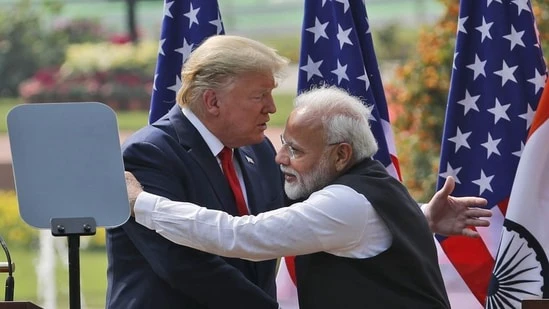India’s negotiating team returned from Washington on Saturday after concluding a fifth round of trade talks without any significant breakthrough beyond the agreed format of negotiations, as the August 1 deadline for potential tariffs looms and President Donald Trump intensifies pressure on trading partners worldwide, including India.
The four-day discussions, led by chief negotiator Rajesh Agrawal, failed to resolve persistent disputes over agriculture, automobiles and – in what has emerged as a potentially new domain – digital trade, policies that have stalled negotiations since March, leaving India’s fate uncertain as Trump’s self-imposed deadline for higher new duties on exporting to America approaches.
According to people aware of the matter, India remains committed to reaching a deal before August 1 if possible, the country will not compromise its core positions under deadline pressure, maintaining that any agreement must be “balanced, long-term, strategic and mutually beneficial.”
The person stressed that negotiators “cannot commit beyond their mandate irrespective of the US tariff threats,” maintaining that any agreement must be “balanced, long-term, strategic and mutually beneficial.”
Negotiations are being held on the basis of two formally agreed frameworks – one is the joint statement of February 13 that proposed a Bilateral Trade Agreement (BTA) by the fall of 2025, and the second is the terms of reference (TORs) agreed between the two parties on April 21 during US Vice-President JD Vance’s India visit, this person added.
“Like America, India is also a vibrant democracy where the people’s will is supreme,” said a second person, speaking anonymously. “While certain subsistence sectors still need protection from global competition to save the livelihood of millions of poor, there are some sensitive sectors that have legal protection in the national interest.”
The first person cited above said the “best-case scenario” would be finalising an interim goods-only deal before August 1, but emphasised that India would not accept asymmetrical arrangements like the one with Indonesia, where “the US got zero-duty access, but imposed a 19% additional tariff on Indonesian goods.”
“Bilateral deals are not done in anticipation and good faith that the other side may reciprocate similar concessions in future,” this person said.
The inconclusive talks come as Trump escalates demands across multiple fronts, targeting multiple countries. On Friday, the Financial Times reported that Trump has intensified pressure on the European Union, pushing for minimum tariffs of 15% to 20% even with an agreement – a significant increase from earlier 10% baseline discussions.
The EU faces the same August 1 deadline, with Trump threatening 30% tariffs on all European imports unless a deal is reached.
Despite five rounds of face-to-face negotiations since March, fundamental disagreements persist between India and the US over market access issues.
India continues to resist American demands for “unfettered access for agricultural goods,” particularly genetically modified crops like soybean and corn, which are banned domestically. The country has also refused to fully open its dairy sector, citing both the subsistence-level nature of farming and religious sensitivities.
Similarly, India has balked at providing “duty-free access in the automobile sector” without corresponding US commitments to withdraw punitive tariffs on Indian steel, aluminium and auto parts.
The people cited above stressed that India expects Washington to adhere to the bilateral framework agreed during Prime Minister Narendra Modi’s February visit, when both leaders committed to negotiating the first tranche of a bilateral trade agreement by fall 2025.
“Both India and the US are following formal processes of BTA negotiations, hence, the effective deadline is by fall of 2025,” the second person said. “If some deal is achieved in the interim, well and good, but the first tranche of BTA is not contingent upon any interim deal.”
India faces multiple tariff threats as Trump escalates his trade pressure campaign. Beyond potential August 1 levies, Trump has threatened a 10% tariff on all Brics members – including India – for challenging US dollar dominance.
The Trump administration has already sent ultimatum letters to more than two dozen countries, imposing levies ranging from 25% to 50% from August 1.
India has so far been spared from these letters, raising hopes that negotiations remain viable.
